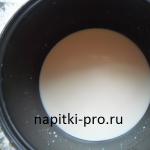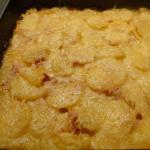Everyone knows firsthand how slippery the steps of a street porch can be after rain or snowfall. And some people even fell on them and received injuries. To protect yourself and your household or guests from such troubles, it is worth investing in anti-slip coating on the porch steps.
There are several types of materials capable of performing such a protective function. All of them will be described in this article, and all you have to do is choose the appropriate option.
Structurally, all types of such coatings can be divided into two types: the first in the form narrow ribbons, strips and profiles and the second in the form of continuous coatings.
There are quite a few varieties of narrow overlays. Let's try to navigate their diversity.
Types of overlays
They produce anti-slip coating on the porch in the form of narrow strips from materials such as rubber, rubber, PVC, and abrasive-coated tapes. They can be combined with anodized aluminum profile.
| Image | Description |
|
|
Ribbed strips on a self-adhesive base can be easily attached with your own hands to the horizontal edge of the steps. |
|
|
L-shaped overlays for finishing the edges of treads. |
|
|
Anti-slip porch pads made of frost-resistant rubber for external and internal stairs made of concrete, wood, metal, tile or stone. |
|
|
Unlike self-adhesive overlays, such strips and corners are installed on the steps during the process of covering them. The fastening points are covered with tiles or wood trim. |
|
|
Aluminum profile with one, two or three rubber or TPE liners. A worn liner tape can be replaced, while the profile fixed to the steps with dowels or screws remains in place. |
|
|
The L-shaped analogue of the previous lining can also have from one to three anti-slip strips. |
|
|
One of the most reliable solutions for making a porch non-slippery is an embedded profile with a replaceable rubber insert. |
|
|
Adhesive-backed strips coated with abrasive particles. They are produced in the form of strips and rolls of large width, which allows you to cut out anti-slip porch coverings of any shape and size. |
How to choose
When choosing one or another type of anti-slip pads, you should pay attention to the following parameters:
- Bandwidth. It can be from 15 to 100 mm, and in the case of an aluminum profile, even more.
- Her shape– flat or angular.
- Durability.
Abrasive belts have the shortest service life. Despite the fact that the fixation of hard particles is very strong, they wear out in 2-3 years.
- Additional functions. These include the possibility of replacing the anti-slip liner. There are also covers that glow in the dark thanks to built-in photocells.

- Installation method. If the porch has not yet been finished, you can consider embedded structures. In all other cases, in order not to spoil the steps, choose overhead or self-adhesive strips.
- Price and release form. Overlays can be sold in pieces of different lengths or in whole rolls, the footage of which is large for an ordinary porch of a private house.
- Appearance, color. Design entrance group is the calling card of your home, so even the shape and color of the strips glued to the steps should be in harmony with its exterior.
Perhaps the options shown below will help you with your choice






Rubber coverings
Very popular anti-slip coatings for the porch from crumb rubber. The raw materials for their production are waste materials crushed into crumbs. car tires and polyurethane glue.
They are produced in the form of overlays or mats on steps, monolithic and roll coverings, as well as in the form of modular tiles or paving stones. If you find this topic interesting and relevant, be sure to watch the video in this article.
Installation methods
Rubber coverings are produced both on a self-adhesive basis and in aluminum profile with mechanical fastening. There are also products that need to be glued to the base using polyurethane glue, or fastened using flat or corner profiles or directly with dowels and screws.
Anti-slip porch mats and overlays are simply placed on the steps and held there by their own weight.






Let us describe, as an example, the technology for laying monolithic rubber steps.
Installation instructions:
- Preparing the foundation. The steps must be smooth, level, dry and clean. The tiles can be glued to a concrete, wooden, metal or polymer base.
To prevent moisture from accumulating on them, it is advisable to make a slope of 1-2 degrees towards the street.
- We prepare a primer from polyurethane glue with turpentine or acetone in equal proportions.
- Apply a continuous layer of glue to the steps using a roller or spatula.

- We cut the non-slip steps for the porch at the back, according to the depth of the tread. The scraps, if desired and of a suitable size, can be used for cladding the riser.

- We lay the step on the base, pressing it tightly to the surface.
You will be able to use the porch within 24 hours, provided the ambient temperature is above +10 degrees.
Gluing can be replaced with mechanical fasteners by screwing in self-tapping screws at a distance of 5 cm from the corners of the product, and making a step between them of no more than 50 cm. To increase the pressing surface, it is worth placing a washer under the screw head.

Advantages
Finished products can withstand mechanical loads and temperature changes and are very resistant to moisture.
- Having sufficient thickness, they perform not only anti-slip, but also shock-absorbing and sound-proofing functions.
- The anti-slip effect is provided by the properties of the rubber itself. In addition, a relief can be applied to the surface, which reduces the risk of falling on the slippery surface of the porch.
- Even in the event of an accidental fall, the likelihood of serious injury will be lower due to the shock-absorbing properties of the coating.

- When ice and snow freeze, the anti-slip coating for outdoor porches is easy to clean. You can impact it with hard, blunt objects without fear of destroying it. Whereas stone or ceramic tile, as well as wood and concrete cannot withstand such a relationship.
- A thick layer of rubber muffles sounds. Perhaps this is not so important for street stairs, but the coating also has this property.
- Finally, the variety of colors is also a significant advantage. With the help of these materials, non-slip steps for the porch can be used to decorate the facade of the house, harmoniously blending them into the surrounding landscape.

The cost of rubber products is quite high, but since their service life is at least 10 years, such design of a street staircase fully pays for itself.
Conclusion
Non-slip steps for the porch are the safety of your loved ones, and the opportunity to decorate the exterior of the house. Plus practicality, because such overlays also protect the edges and surface of steps from damage, extending their service life. If you find this topic interesting and relevant, be sure to watch the video in this article.
Ceramic tiles have one significant drawback - they are often slippery, especially when wet. Modern manufacturers managed to solve this problem: non-slip tiles appeared in the range of tile materials, which quickly gained popularity among homeowners and large developers. Let's look at the specifics of her choice.

Anti-slip tiles are ceramic product with a special surface, which, even when wet, provides good adhesion to shoes or skin (when walking barefoot).
The anti-slip effect is achieved by various methods:
- By applying notches, protrusions and irregularities, creating a relief, slightly rough surface.

- Using a special coating that is applied to the glazed surface of the tile. Chemical compositions, applied to ceramics, form a thin, rough film with small indentations that act like suction cups.

Each of these methods increases friction and promotes better abduction. excess moisture from the floor surface.

Categories
Anti-slip facing material has the “Grip” designation on the packaging, which allows you to identify and highlight it when choosing.
At the same time, the entire range of non-slip floor tiles is divided into 3 categories:
- Mosaic– products up to 100 mm in size. When laying it, a large amount of grout is used, which increases the coefficient of adhesion of the foot (with or without shoes) to the floor.

- Standard– tiles with dimensions not exceeding 300x300 mm. In addition to roughness, on such products they can create three-dimensional patterns, imitating a pebble or grainy surface.

- Porcelain tiles with a matte surface. This type flooring material It is considered the most durable and safe; it can be used for cladding indoors and outdoors (for paving paths or cladding steps).
Porcelain anti-slip tiles can be very small (150x250 mm) and quite large (600x1200 mm).


Scope of use
Non-slip facing material has a wide range of applications. Most tiles are used indoors or under canopies, but there are also some that are perfect for use in open spaces.
Most often, non-slip ceramic tiles are needed for finishing:
- bathrooms and showers;
- hallways;


- balconies and terraces;
- summer kitchen premises.


Porcelain tiles have found application in cladding:
- hallways, corridors, balconies in apartments and houses;
- adjacent areas, staircases, ramps and patios;
- hospital and sanatorium premises;
- enterprises Catering;
- retail and utility areas in stores;
- office premises;
- hotel and entertainment complexes.
This type of cladding is also used in other areas (wherever it is necessary to observe increased safety measures or there is an increased risk of injury).
Classification
Types of non-slip ceramic tiles are distinguished by the degree of adhesion flooring with the surface. The official designation of this parameter is the R index, indicating the angle of inclination at which the anti-slip qualities of the tile are preserved:
- R9. Non-slip floor tiles with an inclination angle of 6 to 10 have this marking. This material can be used in residential premises and in many public institutions.

- R10– with an inclination angle of 10-19. Suitable for use in sanitary and kitchen areas catering industry, as well as for floor coverings in garages.


- R11– with a slope from 19 to 27. Used when decorating floors in industrial refrigeration chambers and dry cleaners.

- R12– tiles with an angle of inclination from 27 to 35. Facing material used in kitchen industrial premises, medical institutions and production workshops.

- R13. Special anti-slip tiles with an inclination angle of over 35, designed for outdoor use.

This type of marking is used for slab material on which shoes are walked.
Products used for areas where people walk barefoot have a different classification and are divided into three types:
- Type A– tiles with an inclination angle of up to 18. They are laid in medical institutions and locker rooms (where visitors often walk barefoot).

- Type B– products with a slope of up to 24. Used in showers and areas located next to swimming pools.
- Type C– facing material with a maximum angle of inclination. Suitable for finishing pool steps and inclined surfaces.


Anti-slip plate elements are classified according to the number of relief profiles on the product.
You can learn more about the types of non-slip tiles and their features from the following video.
Installation rules and care
In general, the rules for laying ceramic tiles do not change regardless of their type.
At the same time, non-slip tiles have some installation features:
- Preparing to install anti-slip ceramic material is carried out as usual: the surface is cleaned of the previous coating, dirt and dust, leveled as much as possible and thoroughly dried.

there is a tiled staircase around the house (on the street), when it rains it is slippery on the steps, also in winter. Please advise best option for winter and summer so that the steps are not slippery and so that you can walk barefoot.
Rugs on the steps are not the best option. They must be secured. And when dirt accumulates under them, it is problematic to lift them.
It is better to use the SureStep system. These are rubber strips that are attached to the edges of the steps. Not slippery, and dirt will not accumulate under them.
There is no need to reposition the tiles. It is better to buy mats with anti-slip coating. They are different, from different materials: plastic, rubber, vinyl, etc.
You also need to take into account the slippery soles of the shoes you wear on tiles. Even on very rough surfaces you can slip in slippery shoes.
In general, tiles come with an anti-slip coating. Its texture is so uneven. But its downside is that it gets dirty quickly and is difficult to clean.
The tiles can be processed large sandpaper, in order to make its surface rougher. In general, outdoor tiles should be laid with a rough, anti-slip surface. As for the steps, the edges of the steps can indeed be equipped with corners or strips made of rubber or aluminum. In any case, a strip of any material will allow your shoes to have greater grip on the edge of a slippery step, including in rain and winter. So it all depends on what you are ready for. Either modify the existing option, or redo everything using appropriate materials.
Non-slip flooring in the bathroom is possible. As for materials, there are not many options, because it is necessary to combine moisture resistance and non-slippery. But there are tools that can help improve safety.
Ceramic tiles - how to stop slipping?
Ceramic tiles, which are most often used on bathroom floors, can be non-slip. Don’t think that it’s enough to choose a tile with a rough, and therefore unglazed, surface, and the problem will be solved. Of course, tiles that are not covered with glaze slip much less, but they do not have such high water resistance ratings, which means you can lay them on the bathroom floor at your own peril and risk.
The solution is to treat the flooring with a special anti-slip agent, which is intended for the floors of bathrooms, showers, saunas, swimming pools, baths and others. wet areas.
The treatment is simple: from time to time the liquid needs to be applied to the floor with a brush. When the floor dries, it will no longer slip, even if you step on it with wet feet.
When choosing a product that will protect the bathroom floor, you need to pay attention to the principle of its action. There are products that form a protective anti-slip film on the surface of the tile, which is reflected in its appearance: the tile becomes duller. In addition, cleaning the bathroom floors will be somewhat difficult until the film is washed off. But there are more modern anti-slip impregnations, the use of which does not form a film.
Porcelain tiles - non-slip flooring in the bathroom
One of best options bathroom floor finishing - porcelain stoneware. Experts believe that this material is even more suitable for finishing wet rooms than ceramic tiles. Ceramic granite has a very dense structure, and, as a result, low moisture absorption. In addition, it does not slip. But this material is used much less often in finishing bathroom floors than ceramic tiles. Firstly, the name, which contains the word “granite,” is confusing. In fact, there is no granite in it, and the word is simply a synonym for strength (strong, like granite). Secondly, in the minds of many, porcelain tiles are something so bulky that they definitely won’t fit in a bathtub. Indeed, there are porcelain stoneware slabs in large formats, but there are also small tiles- like ceramic ones. There are many options between them. But the most serious factor that does not speak in favor of porcelain stoneware: the cost of it finishing material significantly higher than the cost of ceramic tiles.
Non-slip stones for bare feet
Stone tiles on the floor in the bathroom are luxurious, noble, and reliable. As for the sizes, these can be either large-format products (which look good on the floor in spacious rooms) or completely small tiles. Thickness – similar to ceramic tiles. Trying to make the stone non-slip, manufacturers treat it with mechanical and by chemical means. Mechanical way - abrasive brushes, which make the surface of products rough, chemical - various means, which not only impart heterogeneity to the surface structure, but also help it increase “adhesion”. That is, such a stone repels water, but the soles of the feet do not (they stick to it like low-power rubber suction cups). However, there are anti-slip agents that can be applied to any stone products. But there is also an initially non-slip stone - artificial.
When finishing the floor in the bathroom, first of all, focus on safety. And don’t be fooled by the “reliefs” and “pimples” - if the material is sliding, then they will not help, and in some cases they can even provoke a fall.
But even if the tiles feel rough to the touch, it is better to play it safe and purchase an anti-slip agent.

Photo: Peronda. Before use, grouts, cleaning agents, and other compounds are tested on an inconspicuous area of polished porcelain tile flooring.
Polished has an unusually impressive, almost mirror shine, but becomes slippery when exposed to water.
Popular due to its high resistance to abrasive loads. First of all, this property is possessed by a material with a uniform structure throughout the entire depth of the tile. When it wears out appearance does not change, but porcelain stoneware is tested for surface hardness as a natural stone, - according to the mineralogical hardness scale (Mohs scale). However, this indicator is significantly affected by processing. The highest strength (eight out of ten possible on the Mohs scale) is achieved by tiles of natural (unglazed) porcelain stoneware, which are not subjected to additional machining after firing.
To obtain polished elements (strength five to six units), the upper rough layer is cut off from them in production and the surface is polished with special diamond attachments, achieving varying degrees of gloss: from matte to mirror-like. When making glazed porcelain tiles, before firing, a layer of refractory transparent or colored glaze is applied to the tiles, which can subsequently be polished.
How to make polished porcelain tiles less slippery?
A floor decorated with polished or glazed porcelain tiles, as a rule, becomes the main accent. In its brilliance, purity and nobility are felt, and due to the reflection of light, the space seems more voluminous. But after polishing, micropores open on the surface of the material, and oils or dyes that get into them can lead to the formation of stains that are difficult to remove. In addition, a wet floor becomes slippery, which means the likelihood of injury increases.
There will be no problems if you treat the porcelain tiles immediately after installation. special compounds, then it will become less slippery. Impregnates protect low-absorbent cladding (and its seams) from stains of various origins, which facilitates daily cleaning and removal of local contaminants. Anti-slip agents activate surface micro-erosion, ensuring water drainage from the coating. Treatment must be repeated periodically in accordance with the product manufacturer's recommendations.
Regarding the degree of surface strength of porcelain stoneware with processing different types, then this factor is important to consider when choosing for areas with extremely high traffic ( shopping centers, airports, etc.).
In private interiors the difference is hardly noticeable, here main criterion- aesthetic value of the cladding.












